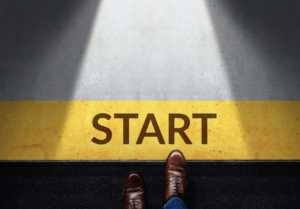Ads
Body language is a vital aspect of business and social communication, as it enables individuals to express respect, attention, and enthusiasm without the need for verbal interruptions. Mastering the art of body language can greatly improve one’s social skills and interactions in various settings. This article aims to explore the significance of body language, particularly in the workplace, and provide answers to common questions related to this topic.
What exactly is body language? Body language refers to the non-verbal cues and signals that individuals use during face-to-face interactions to convey messages. These may include movements, postures, gestures, facial expressions, and even eye contact. In most cases, people exhibit body language unconsciously, making it a powerful tool for communication. The way we stand, sit, move our hands, make eye contact, and even shake hands can all send signals to others about our thoughts, feelings, and intentions.
In a workplace setting, body language plays a crucial role in enhancing interpersonal skills and fostering positive communication. Given that most organizations rely on collaboration and effective teamwork, good communication skills are essential for enhancing productivity and building stronger relationships within the workplace. By understanding and utilizing appropriate body language cues, individuals can convey professionalism, respect, and confidence in their interactions with colleagues, clients, and superiors.
Here are some tips for improving your workplace body language:
1. Firmly shake hands: A firm handshake is often seen as a sign of respect and interest in a conversation. It signifies your willingness to engage and interact with the other person. However, it is important to strike a balance between a firm handshake and being overly aggressive or timid. Aim for a confident grip that conveys professionalism and warmth.
2. Smile: Smiling is a universal gesture that conveys positivity, friendliness, and approachability. When meeting someone for the first time, a warm smile can help to create a welcoming atmosphere and set the tone for a pleasant conversation. In addition to greeting others with a smile, be sure to maintain a positive expression throughout your interactions to show that you are engaged and attentive.
3. Make eye contact: Eye contact is a powerful form of nonverbal communication that conveys interest, respect, and attentiveness. When engaging in a conversation, be sure to maintain eye contact with the other person to show that you are fully present and listening. Avoiding eye contact can give off signals of disinterest or insecurity, so make an effort to connect visually with others to establish a sense of trust and connection.
4. Nod your head: Nodding your head while listening to someone demonstrates that you are actively engaged in the conversation and receptive to what they are saying. It shows that you are attentive and interested in their thoughts and opinions. Combine nodding with other body language cues, such as smiling and maintaining eye contact, to convey your understanding and agreement with the other person.
5. Use hand gestures: Hand gestures can be an effective way to accentuate your verbal communication and convey emotions or emphasis. Open hand gestures can signal openness and receptiveness, while closed or clenched hands may indicate tension or defensiveness. Be mindful of your hand movements and use them purposefully to support your message without being overly dramatic or distracting.
6. Pay attention to posture: Your posture can speak volumes about your confidence, attentiveness, and respect in a workplace setting. Standing or sitting with good posture conveys professionalism and assertiveness, while slouching or crossing your arms may give off signals of disinterest or defensiveness. Be mindful of your body position and adjust it accordingly to convey a positive and engaging presence.
7. Manage subtle movements: While small movements and gestures can be natural during conversations, it is important to regulate them to avoid distracting or overbearing behavior. Avoid fidgeting, tapping your fingers, or checking your watch excessively, as these actions can be perceived as impatience or disinterest. Maintain control over your body language and use it strategically to enhance your communication with others.
Frequently asked questions about body language in the workplace:
Can you overdo body language? Yes, excessive body language can be distracting and may detract from your verbal message. It is important to strike a balance between using nonverbal cues to support your communication and overwhelming others with unnecessary gestures.
How does individuality impact body language? Individual differences in communication style, personality, and cultural background can influence how people interpret and use body language. Tailoring your nonverbal cues to match the context and the person you are interacting with can help to create a more effective and authentic communication experience.
Do cultures have different body language norms? Yes, cultural differences can significantly impact how body language is interpreted and used in different settings. In some cultures, gestures that are considered polite or respectful may differ from those in other societies. Understanding and respecting these cultural nuances can help to avoid misunderstandings and foster better cross-cultural communication.
In conclusion, mastering the art of body language can greatly enhance your interpersonal skills and communication effectiveness in the workplace. By paying attention to your nonverbal cues, such as handshakes, smiles, eye contact, gestures, posture, and subtle movements, you can convey professionalism, respect, and confidence in your interactions with others. By being mindful of your body language and adapting it to suit various situations and cultural contexts, you can build stronger relationships, enhance teamwork, and succeed in your professional endeavors.






